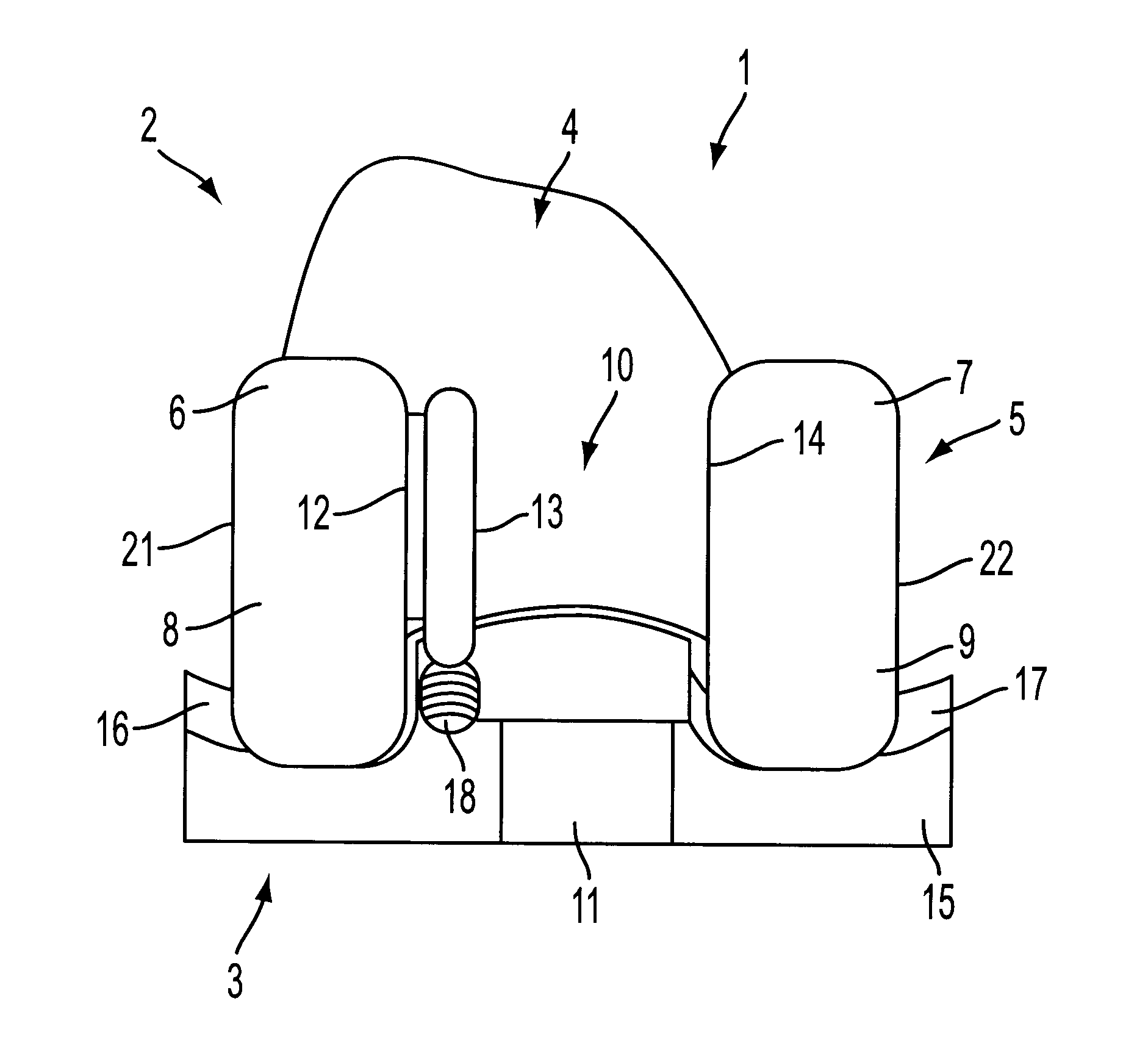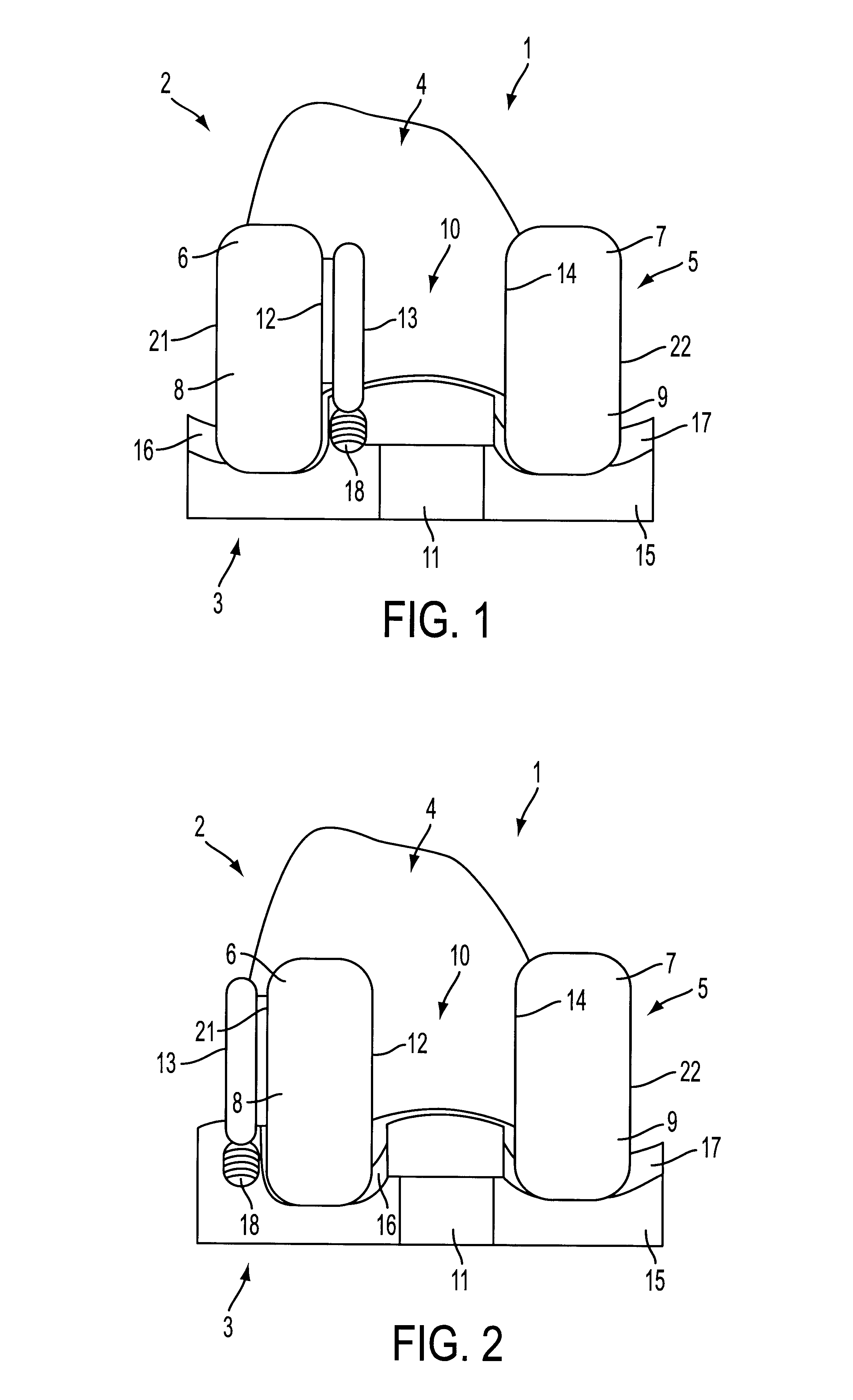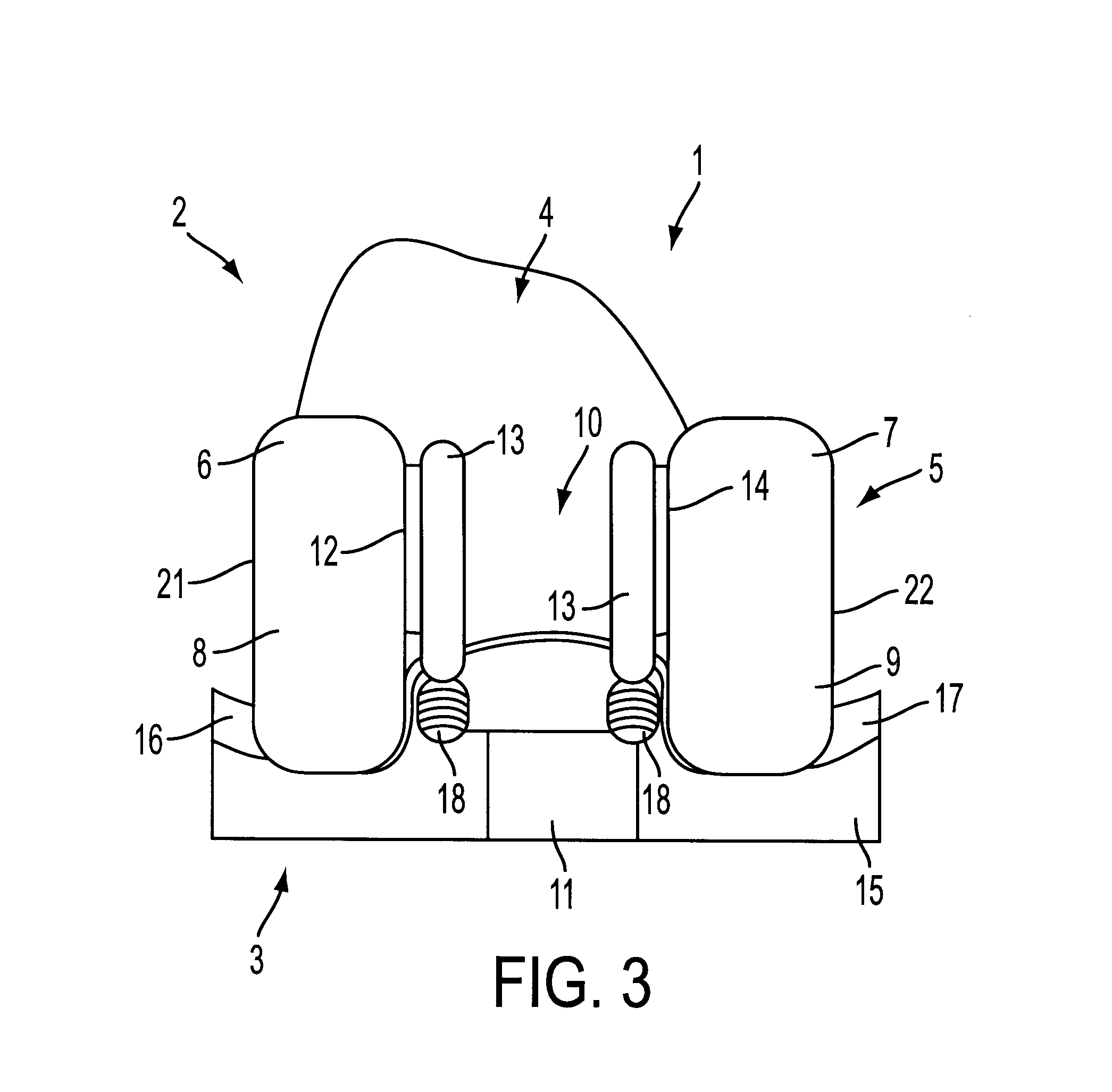Knee prosthesis
a knee and prosthesis technology, applied in the field of knee prosthesis, can solve the problems of inability to retain the posterior cruciate ligament, reducing the resistance of the knee,
- Summary
- Abstract
- Description
- Claims
- Application Information
AI Technical Summary
Benefits of technology
Problems solved by technology
Method used
Image
Examples
Embodiment Construction
FIG. 1 displays a total prosthesis of the knee 1 which essentially comprises a femoral element 2 and a tibial plateau 3.
In transverse section, the femoral element 2 is U-shaped overall i.e. it is formed from an initial anterior wing 4 which extends by way of a second posterior wing 5.
The flat internal surfaces of both these wings are intended to come together with the flattened ends of the femoral epiphysis (not shown) produced by sectioning the epiphysis anteriorly and posteriorly.
The posterior wing 5 comprises of two distinct and parallel cambers 6 and 7 integral with the anterior camber 4. The external surface of cambers 6 and 7 and the anterior wing 4 have a curved shape defining the limits of two lateral condyles 8 and 9 which may be symmetrical or asymmetrical depending on the usage of the prosthesis 1.
The external condyle 8 is separated from the internal condyle 9 by a free space 10 which is in communication with a space or notch 11 made in the posterior part of the tibial pl...
PUM
 Login to View More
Login to View More Abstract
Description
Claims
Application Information
 Login to View More
Login to View More - R&D
- Intellectual Property
- Life Sciences
- Materials
- Tech Scout
- Unparalleled Data Quality
- Higher Quality Content
- 60% Fewer Hallucinations
Browse by: Latest US Patents, China's latest patents, Technical Efficacy Thesaurus, Application Domain, Technology Topic, Popular Technical Reports.
© 2025 PatSnap. All rights reserved.Legal|Privacy policy|Modern Slavery Act Transparency Statement|Sitemap|About US| Contact US: help@patsnap.com



